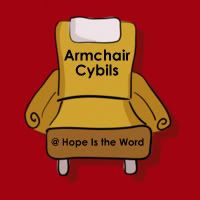This year’s Cybils Nonfiction picture books was heavy on the nature/environment theme, with a whopping five out of the six titles falling under said theme.
I read four of the Cybils finalists, three environmental/nature ones and the lone non-natural book.

All the Water in the World by George Ella Lyon and Katherine Tillotson is a poetic celebration of the water cycle, with text that TaP dAnCeS and sprays with different fonts and sizes of fonts. The illustrations flow in semi-abstract fashion.
This is a great conversation-opener, but will require conversation about the water cycle, since it doesn’t so much explain as it eludes to how the water cycle works.
Can We Save the Tiger? written by Martin Jenkins and illustrated by Vicky White tells about animals that are extinct, animals that are endangered (like the tiger), and once endangered animals that have been preserved. The illustrations are classic nature notebook stuff–highly detailed black and white shaded drawings with the occasional colored bit.
This book did a nice job of balancing the interests of animals with the interests of humanity–and talking about the difficult decisions stewardship of the earth involves (not that it uses the term “stewardship” to describe it.)
Thunder Birds by Jim Arnosky is classic Arnosky, featuring fantastic nature drawings. This title showcases the avian predators in their fierce glory. The fold-out pages often allow for life-size drawings of bird heads, accompanied by statistics about each type of bird and a narrative piece about Jim’s (and often his wife Deanna’s) experiences with each bird.
This is the least narrative of the books so far, meant more for browsing and reading in short snippets than for reading aloud all in one setting. The fold-out pages are fascinating and it’s fun to have a glimpse of the size of the animals–but I fear the format isn’t as durable as a normal two-page spread.
I enjoyed all three of these books, but something about them rubbed me a little wrong. It took me a while to identify it, but I think I finally figured it out.
In an age where we eschew “moralistic” literature and (rightly?) consider the Victorian morality pieces to be pedantic, we seem to have no problem allowing environmentalism to be the new morality. As long as it’s environmentalism we’re championing, it’s just fine to moralize.
Thus, All the Water in the World ends with the injunction “All so precious–do not waste it. And delicious–we can taste it. Keep it clear, keep it clean…keep Earth green.”
Okay, I’m all about keeping water clean and keeping Earth green. But this feels a little bit like propaganda. I guess I’d rather children’s books (which are meant for an audience that doesn’t really have much judgment) focus more on facts and less on persuasion. Or something.
Which probably explains why my favorite of the four I read was Carlyn Beccia’s I Feel Better with a Frog in My Throat. (Although the fact that I’m all about medicine may also contribute to my attraction to this title.)
I Feel Better with a Frog in My Throat is written in quiz format, asking the reader to identify which of the proffered historical cures might actually help. The following pages walk through each cure, answering “Yes” “No” or “Maybe” to whether the cure would work and giving a brief history of the use of that specific “cure”.
This was a fascinating and imaginative book. It’s gross enough that boys should really love it and not gross enough that girls won’t read it–a perfect mix.
 These books were all Cybils NonFiction Picture Book Finalists. I read them as a part of Amy’s Armchair Cybils. If asked to rank the books, I’d put I Feel Better at the top of the list, followed by Thunder Birds and Can We Save the Tiger?. All the Water in the World ranks last in my book, but basically just because of that bit I quoted above. Apart from those few lines (which interrupt a beautiful book), I’d recommend all four titles.
These books were all Cybils NonFiction Picture Book Finalists. I read them as a part of Amy’s Armchair Cybils. If asked to rank the books, I’d put I Feel Better at the top of the list, followed by Thunder Birds and Can We Save the Tiger?. All the Water in the World ranks last in my book, but basically just because of that bit I quoted above. Apart from those few lines (which interrupt a beautiful book), I’d recommend all four titles.

I think you make an excellent point about environmentalism being the new morality. However, I nominated Can We Save the Tiger, and it’s illustrations and format still blow me away. The only one of these I haven’t read is the one about water, and I think it’s safe to say that I’d be happy with any of the other three as the winner.
I’m so glad you played along!
its, not it’s —> curses on autocorrect!
Amy-I noticed that you nominated Can We Save the Tiger, and hoped that my criticism of environmental moralism wouldn’t be taken the wrong way. I really enjoyed reading Can We Save the Tiger–and thought it did an excellent job of talking about the interests of man as well as those of animals. But the cumulative effect of the three books sparked my little tirade about moralism and environmentalism.
Oh no, I’m not offended or upset–I know what you mean, and I agree. :-)